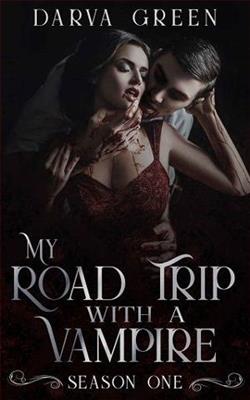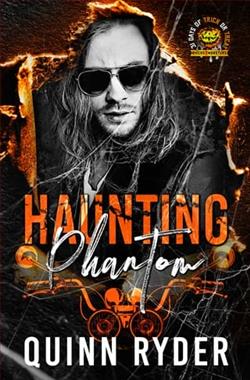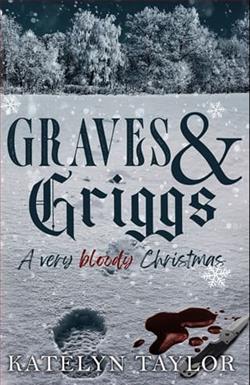Page 64 of A Ruse of Shadows
“Is there any chance that the case happened extremely recently, as in the woman only arrived in the area two nights ago?”
Inspector Treadles’s brows leaped up. “Correct. She arrived in the area exactly two nights ago, took the house yesterday, and the body was discovered this morning.”
“Did she tell anyone local that she was from somewhereotherthan London?”
Inspector Treadles leaned forward. “This can’t be a matter of deduction. You have someone specific in mind, don’t you, Miss Holmes?”
“I’m afraid I do. She is in her early thirties, beautiful, well-dressed, speaks with a slight French accent—and used a name that wasn’t her own. Something along the lines of Mrs. Overhill?”
Inspector Treadles sucked in a breath.
Charlotte sighed. “Inspector, I’m afraid I shall have to go with you.”
Twenty-one
Miss Holmes, of course, could not accompany Treadles as a woman without darkening his reputation or hindering his investigation. Instead, she took the earliest train the next morning and arrived as the rotund, bespectacled, and very professional-looking Mr. Adams. Odd—Treadles had been under the impression that the great detective and her associates typically used the name Hudson when they wanted a casual alias. It was as if she didn’t want anyone to know that Sherlock Holmes was involved.
“I have engaged Mr. Adams to take photographs for the case,” said Treadles to Sergeant Burr, the local police officer assigned to assist him.
His conscience prickled at the deception. But compared to the violent internal struggle he’d experienced concerning her presence at Stern Hollow, this was only a twinge.
The use of photography in police work being spotty and very much at the individual investigator’s discretion, the presence of a photographer greatly impressed Sergeant Burr. “A pictorial record of crimes. At least she was beautiful, Mrs. Overhill. Imagine some poor future bobby coming across a picture of old Mr. Tavis after he’d been stabbed seven times. Or the sight of Squire Gibbons’s favorite greyhound skinned and strung up on his front gate.”
Treadles occasionally imagined retiring to the country someday. The skinned greyhound gave him pause.
Miss Holmes, in her guise, questioned Sergeant Burr eagerly about the poor dog and the just as brutally done-in Mr. Tavis, details of which the sergeant was more than happy to provide as they drove to the scene of the murder.
“But in those cases, gruesome as they were, there was hardly any mystery,” said Sergeant Burr. “We knew the culprits, and we knew the causes. Mrs. Overhill’s case makes me scratch my head.”
“I understand she spent a night at the railway inn in Sittingbourne?” asked Treadles.
He glanced at Miss Holmes. She had said only that she happened to be in the midst of another inquiry and the victim’s description matched that of a witness known to have left London under less-than-ideal circumstances. He hadn’t asked for more information beyond that—he had received the impression that a fuller picture would not have been forthcoming.
What was she investigating? And was it related to the trouble she and Lord Ingram had expected?
“That’s right,” answered Sergeant Burr. “At the inn in Sittingbourne Mrs. Overhill saw the house being advertised. She visited the place the next day, and liked it enough that she paid for two weeks and took the key right away.
“Mrs. Staples, the caretaker’s wife, was instructed not to enter the house to clean except every three days. It was only because provisions Mrs. Overhill had ordered were delivered to the caretaker’s cottage that she decided to go over to the house. When no one answered her knocks, she let herself in. That was how she found Mrs. Overhill dead.”
Miss Holmes nodded gravely and made all the appropriate noises of sorrow and dismay.
They were driving through some rather featureless countryside, but even featureless countryside was fresh, green countryside. Due to Kent’s relative proximity to London, the land was becoming more and more desirable as residential plots.
The scene of the murder was a former farmhouse bought by town dwellers and remade as a rustic villa. It was hired out most of the year, with the owners descending only at Christmas and Easter, according to the sergeant.
They looked around the grounds first and found little of note, besides a largeish fishpond that had acquired a landscaped border in the renovation. The sergeant then unlocked the front door and ushered them inside.
The inside of the villa was decorated like a hunting lodge, with wood-paneled walls, stuffed animal heads, and even a few hunting horns set on stands. The air smelled of floor polish, which must have been applied liberally when the previous guests had left.
Their footsteps echoed on the floor as they marched toward the back of the house, where the parlor was located. Presumably the parlor gave onto the pond, but all the windows were shuttered, all the curtains drawn. The sergeant lit two lanterns; their light shone on leather-upholstered sofas and tapestries that depicted medieval woodlands.
“I read in a circular from Scotland Yard that we ought to leave crime scenes as undisturbed as possible until expert detectives arrive. I tried to do exactly that,” said the sergeant. “ ’Course we’ve had to move the body, but other than that, Inspector, I haven’t touched a thing. Mrs. Staples said she also didn’t touch anything—not in here, at least. But it’s a shame about the rug.”
A large zebra-skin rug near the center of the parlor was now grotesquely bloodstained.
“Mrs. Overhill lay facedown on the rug, shot three times in the back,” said the sergeant, rather reluctantly.
“Shot in the back,” mused Inspector Treadles. “Does that mean she was headed to the sideboard to fetch some whisky?”















